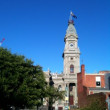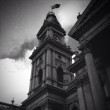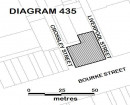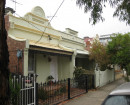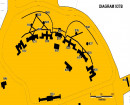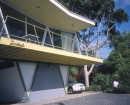Back to search results
FITZROY TOWN HALL
201 NAPIER STREET FITZROY, YARRA CITY
FITZROY TOWN HALL
201 NAPIER STREET FITZROY, YARRA CITY
All information on this page is maintained by Heritage Victoria.
Click below for their website and contact details.
Victorian Heritage Register
-
Add to tour
You must log in to do that.
-
Share
-
Shortlist place
You must log in to do that.
- Download report

FITZROY TOWN HALL SOHE 2008













On this page:
Statement of Significance
What is significant?
The Fitzroy Town Hall was erected in two stages. The hall wing and a tower were designed by W.L. Ellis and built in 1873 by Nation Company. The second stage, designed by G. Johnson and built by J. Moore in 1887-90, included extensions to the hall, new municipal offices, library, court house and police station. A centrally-located tower replaced the original.
How is it significant?
The Fitzroy Town Hall is of architectural and historical significance to Victoria
Why is it Significant?
The Fitzroy Town Hall is of architectural significance as a most intact and exemplary High Victorian building and for its association with two prominent Melbourne architects. It features grand Corinthian porticos and temple forms and an unusual clock tower. The building's freestanding form, fine interiors and multitude of prominent foundation stones are also distinctive. The building is significant for its associations with George Johnson, possibly the most prolific designer of municipal buildings in late 19th century Victoria. Johnson was responsible for Collingwood, Northcote and Hotham (North Melbourne) Town Halls, as well as many theatres and opera houses in Melbourne and other Australian cities, and the annexes to the Royal Exhibition Building in Carlton. The Courthouse entrance is a feature of the exterior and is a fine example of one of Johnson?s favourite motifs.
The Fitzroy Town Hall is of historical significance as a symbol of the growth of Melbourne during the long boom prior to the 1890s. The building is representative of the aspirations and burgeoning wealth of Melbourne during the gold rush years and a manifestation of local government rivalry, which led to the construction of a number of grand town halls throughout the city's suburbs.
The Fitzroy Town Hall was erected in two stages. The hall wing and a tower were designed by W.L. Ellis and built in 1873 by Nation Company. The second stage, designed by G. Johnson and built by J. Moore in 1887-90, included extensions to the hall, new municipal offices, library, court house and police station. A centrally-located tower replaced the original.
How is it significant?
The Fitzroy Town Hall is of architectural and historical significance to Victoria
Why is it Significant?
The Fitzroy Town Hall is of architectural significance as a most intact and exemplary High Victorian building and for its association with two prominent Melbourne architects. It features grand Corinthian porticos and temple forms and an unusual clock tower. The building's freestanding form, fine interiors and multitude of prominent foundation stones are also distinctive. The building is significant for its associations with George Johnson, possibly the most prolific designer of municipal buildings in late 19th century Victoria. Johnson was responsible for Collingwood, Northcote and Hotham (North Melbourne) Town Halls, as well as many theatres and opera houses in Melbourne and other Australian cities, and the annexes to the Royal Exhibition Building in Carlton. The Courthouse entrance is a feature of the exterior and is a fine example of one of Johnson?s favourite motifs.
The Fitzroy Town Hall is of historical significance as a symbol of the growth of Melbourne during the long boom prior to the 1890s. The building is representative of the aspirations and burgeoning wealth of Melbourne during the gold rush years and a manifestation of local government rivalry, which led to the construction of a number of grand town halls throughout the city's suburbs.
Show more
Show less
-
-
FITZROY TOWN HALL - History
Associated People: George Johnson;FITZROY TOWN HALL - Permit Exemptions
General Exemptions:General exemptions apply to all places and objects included in the Victorian Heritage Register (VHR). General exemptions have been designed to allow everyday activities, maintenance and changes to your property, which don’t harm its cultural heritage significance, to proceed without the need to obtain approvals under the Heritage Act 2017.Places of worship: In some circumstances, you can alter a place of worship to accommodate religious practices without a permit, but you must notify the Executive Director of Heritage Victoria before you start the works or activities at least 20 business days before the works or activities are to commence.Subdivision/consolidation: Permit exemptions exist for some subdivisions and consolidations. If the subdivision or consolidation is in accordance with a planning permit granted under Part 4 of the Planning and Environment Act 1987 and the application for the planning permit was referred to the Executive Director of Heritage Victoria as a determining referral authority, a permit is not required.Specific exemptions may also apply to your registered place or object. If applicable, these are listed below. Specific exemptions are tailored to the conservation and management needs of an individual registered place or object and set out works and activities that are exempt from the requirements of a permit. Specific exemptions prevail if they conflict with general exemptions. Find out more about heritage permit exemptions here.
-
-
-
-
-
ROYAL EXHIBITION BUILDING AND CARLTON GARDENS (WORLD HERITAGE PLACE)
 Victorian Heritage Register H1501
Victorian Heritage Register H1501 -
CARLTON GARDENS PRIMARY SCHOOL
 Victorian Heritage Register H1624
Victorian Heritage Register H1624 -
SACRED HEART CATHOLIC CHURCH
 Victorian Heritage Register H0016
Victorian Heritage Register H0016
-
"1890"
 Yarra City
Yarra City -
"AMF Officers" Shed
 Moorabool Shire
Moorabool Shire -
"AQUA PROFONDA" SIGN, FITZROY POOL
 Victorian Heritage Register H1687
Victorian Heritage Register H1687
-
'Boonderoo', House and Outbuildings
 Greater Bendigo City
Greater Bendigo City -
'Riverslea' house
 Greater Bendigo City
Greater Bendigo City -
1 Adam Street
 Yarra City
Yarra City
-









